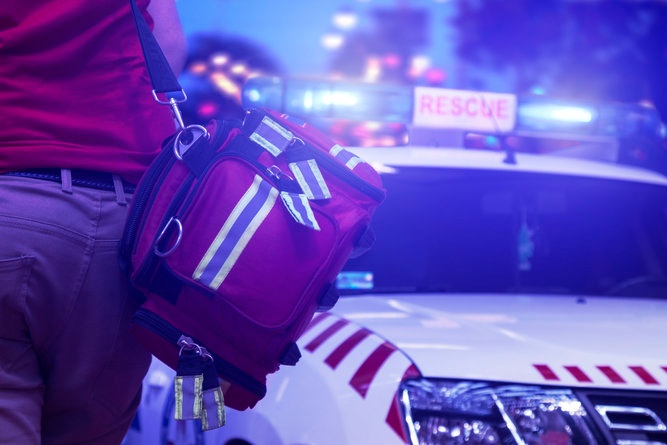
You only stepped out of the meeting for a minute just to grab another cup of coffee, but while you were out, your fellow firefighters voted that you be the one tasked with designing and stocking the new first-in bags that will be carried on all the rescues of your department. How to begin?
The best approach is to start broad, then hone in on the particulars. So let’s begin with the bag itself.
Bigger is not always better
First-in bags come in all shapes and sizes, from a small, lightweight backpack to a cumbersome, multifaceted duffel bag. So begin by determining the size and style of bag that will best suit your agency. This will depend on several factors:
- The size of your department: In larger departments with plenty of personnel, your first-in bag can be more streamlined since you have plenty of hands available for toting equipment such as airway and pediatric bags.
- Mutual response times of ALS agencies: If ALS is responding from far out, you may want to include more specialized equipment, such as supraglottic airways or an OB kit, since you may experience extended on-scene times while awaiting transport.
- Types of terrain you expect to encounter: If you cover rugged terrain where patients are located off-road, you may want a larger, well-stocked first-in bag since you won’t have the ability to run back to the truck to retrieve equipment. But remember that the more equipment you add, the heavier the bag–something to think about when hiking to that downed mountain biker.
What to Include
Once you’ve selected the style and size of the bag, your next step is to stock it. This is fairly straightforward: you will need equipment that enables you to protect yourself (PPE), assess the patient, correct any life-threatening conditions, and initiate treatment. Let’s break these down:
Personal Protection Equipment
- Gloves
- Mask
- Goggles
- Gown
- Hand sanitizer
- Biohazard container
- Sharps container
Patient Assessment
- BP cuff and stethoscope
- Thermometer
- Penlight
- EMS field guide
- Glucometer
Equipment to Correct Life-Threatening Conditions
Respiratory
- Bag valve device/masks (adult and pediatric)
- Portable suction unit
- Assorted oropharyngeal/nasopharyngeal airways
- Magill forceps
Trauma
- Assorted dressings
- 4”x4” gauze
- 2”x2” gauze
- Adhesive bandages (assorted sizes)
- Sterile multi-trauma dressings, large and small
- Gauze rolls (assorted sizes)
- Occlusive dressings
- Triangular bandages with safety pins
- Sterile burn sheets (2)
- Adhesive tape (1”, 2”, 4”)
- Arterial tourniquet
- Sterile saline
- Scissors
- Cold packs
Specialized Tools/Equipment
- Ring cutter
- Topical hemostatic agent
- OB kit
- Infant bag valve mask
- Hydrogen peroxide
- Q-tips
- Tweezers
- Bite sticks
- Rescue blanket
- Hot packs
Your first-in bag must meet your daily response needs. It should be small enough to be transportable yet stocked well enough to provide you with the tools you need to care for your patients.
If you are tasked with assembling a first-in bag for your agency, keep in mind that two brains are better than one: by forming a committee of your peers, you can pull from your combined knowledge and experience to determine the best choice for your trucks. And be sure to follow local protocols, guidelines, and state laws to ensure your rigs are in compliance.
Editor's Note: This blog was originally published in July, 2016. It has been re-published with additional up to date content.
















